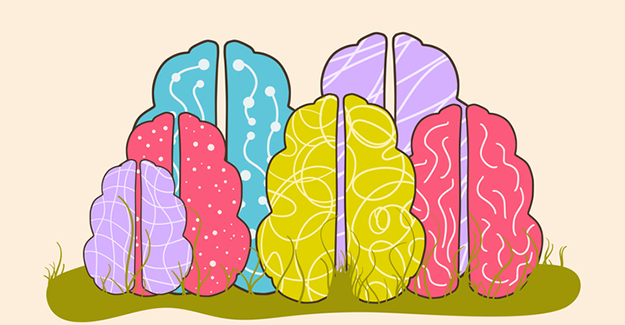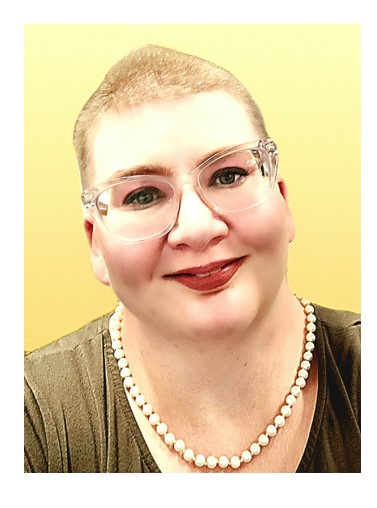The secret sauce: Strengths of the neurodivergent workforce and communication tips to optimize them

Fifteen to 20% of the global population have some kind of neurodivergent condition, yet neurodiversity is still a highly misunderstood concept. Some readers may remember last Neurodiversity Celebration Week when I briefly overviewed what neurodiversity is and how it impacts veterinary teams. In case you missed it, here’s a refresher:
Neurodivergence vs. neurodiversity
Neurodivergence is the idea that some people’s brains are built differently, which intrinsically affects how they think, feel, behave, and communicate daily. “It is fully who I am, not some disease I have,” says Emily Lankau, DVM, a veterinarian diagnosed with attention deficit hyperactivity disorder (ADHD).
It is also a civil and social change crusade with the core value of embracing these unique brains and the people who have them, dispelling misinformation, tearing down barriers, and building support systems to protect against marginalization.
In short, neurodivergence is something a person is, and neurodiversity is the fundamental principle of embracing those differences and building ways for neurodivergent people to better participate in society. These neurological differences come with identifiable strengths that, when channeled properly, positively impact an organization’s productivity and growth.
I interviewed four professionals across different industries and diagnoses who each shared insight into their unique abilities. We also discussed specific ways that our allies can strengthen their communication skills when interacting with us and other neurodivergent colleagues.
Empathy and bipolar disorder
Bipolar disorder (BD) is a mental health condition associated with shifts in mood and levels and other symptoms. A person with BD may experience episodes of mania or elevated mood, depressive episodes, or “mixed” episodes with manic and depressive symptoms.
Empathy is one of the positive traits associated with BD. Jordan Lewandowski got himself an entire job turning empathy into a learned skill as a producer and “Head of Story” for an automotive industry training firm. He leads creative teams to make learning modules emphasizing better social skills and relationship-building to buck the “sleazy car salesman” stereotype.
He leans into his natural empathy to form genuine connections on his team.
“I’ve learned to embrace the weird stuff,” he says. “Allowing your authentic self to shine through . . . gives other people permission to take off their mask and join the party, just as they are.”
Enhanced rationality and autism
Autism is a neurodevelopmental difference that affects the way people think and communicate with others. Enhanced rationality is a recognized trait of individuals with ASD, which means that autistic people are more likely to make logical judgements and decisions that are less biased than their neurotypical counterparts.
Being able to separate emotions and logic as a veterinary professional is a superpower that Uncharted Veterinary CEO Ron Sosa, CVPM, CVBL, CCFP, FFCP, HABCP, learned to lean heavily into during his years as a clinician.
“I have been very successful in compartmentalizing tasks and emotions for certain things. For instance, [separating] relationships in and outside of work, puppy visits, and euthanasia,” Sosa says.
Rational thinking is an in-demand trait in the workplace, and not just in veterinary medicine.
The World Economic Forum's Future of Jobs report released in 2023 revealed that analytical thinking skills were imperative to professional development and success, being classified as the number one core skill for workers last year.
Creative thinking and attention deficit hyperactivity disorder
ADHD is a chronic brain condition that causes executive dysfunction, leading to emotional dysregulation, memory and motivation difficulties, and concentration issues. However, having a speedy brain that can easily jump from thought to thought or deep dive into a single concept leads to increased creative thinking, even in narrowly defined tasks.
“ADHD means I think very quickly and have 1,001 ideas,” says Lankau. “I often make connections that more linear thinkers don’t.”
As a researcher, she uses this superpower to find unique ways to connect dots under strict deadlines— and to do so more quickly than neurotypical peers.
“If someone gives me an outline or a few paragraphs to work from, I can write an entire scientific manuscript from an outline and raw data in two to three days,” Lankau says.
Resilience and obsessive-compulsive disorder
Sometimes it’s not the condition itself, but a sense of ownership over your diagnosis, that serves as a catalyst for both internal and external growth at work.
Amanda Kramlich, RVT, was diagnosed with obsessive compulsive disorder (a long-lasting disorder in which a person experiences uncontrollable and recurring thoughts called obsession, engages in repetitive behaviors termed compulsions, or, often, experiences both) only three years go.
“I have very clean hands,” jokes the seasoned veterinary technician.
“Growing up, I knew I had OCD, but I didn’t seek help until my adulthood,” she says.
Her diagnosis has motivated her to become more resilient and take charge of her condition at home and at work.
“Honestly, having OCD and accepting it has made me a stronger person today. It has taught me to ask for help and let minor things go that I can’t control,” she continues.
As a result, navigating her OCD has given her the tools to mitigate job-related stress as well as techniques that bolster her relationships with co-workers and managers.
Even just having a diagnosis can kick-start a journey of purposeful self-improvement and overcome barriers to success for someone who is neurodivergent.
6 Ways to be a neurodiversity ally
When our discussion turned to allyship and immediate, actionable ways to be a neurodiversity champion at work, almost everyone said the most important way to be an ally is through clear communication.
1. Use meeting agendas
“I appreciate when meetings have agendas that are sent in advance; bonus points if the agenda includes a brief summary of the previous meeting’s action items so I can make sure I didn’t flake and forget to do something I have promised to complete,” says Lankau.
2. Give a 10 second pause
In the book Is That Clear? Effective Communication in a Neurodiverse World, co-author Joe Hutton offers two valuable tips: Slow down to allow processing time and avoid confusing language.
Receiving information from someone who is speaking quickly can be overwhelming, Hutton writes, so allow pauses when speaking with neurodivergent coworkers.
He recommends giving at least 10 second pauses—and if you don’t get a response right away, don’t assume that you haven’t been heard or are being ignored. It may be that the listener is allowing time for their brain to catch up and analyze the information they just received before responding.
3. Skip the metaphor
When it comes to what you can do to avoid miscommunication with neurodivergent coworkers, remember that much of the language we use for business communication is figurative and therefore open to multiple (and erroneous) interpretations.
“I need this document soon,” can be subjective even to the neurotypical ear, while “I need this document between 3:00pm and 5:00pm today” clearly communicates a concrete deadline and a workable goal.
4. Speak literally
Another tip for communicating with neurodivergent colleagues is to mentally review what you are going to say by asking yourself, “If someone were to take this phrase literally, would the meaning of my statement change?”
For instance, you may want to say, “Do you have a second to discuss a project,” which can be interpreted as requesting a literal second and may also leave your coworker confused about what project you are referencing.
A better way to frame this request is, “Can I have 15 minutes of your time today to clarify some details on an upcoming marketing campaign?” By avoiding colloquialisms and vague wording, misunderstandings can be avoided by both parties.
5. Avoid vague and ambiguous feedback
Sosa also highlights the need for transparency: “As an autistic person I need to know where I stand with people at times,” he says. “This means I ask for hard, direct feedback.”
When assessing job performance, it’s important to cite specific job-related behaviors rather than keeping it vague or couching it in ambiguous language. Lankau and Sosa both cited this as a communication flex they wish to see more people adopt in the workplace.
“If someone provides me with very specific behavioral feedback on what they would like to see me do differently, I’m pretty open to self-reflection,” Lankau says. “For example, if a client asks me to speak more slowly so they can better understand me, I can make a conscious effort to slow down when talking with that client.”
6. Be precise with requests for behavior changes
A 2022 article by MIT found that in performance reviews of neurodivergent employees, feedback that addresses specific examples of the employee’s shortfalls and precise ways to correct them lead to nearly a 100% increase in performance.
The article also stated that, “A good rule is that if broad behavior assessments can’t be supported, you should reconsider giving feedback related to them.”
Or, as Lankau put it, “For years, people would tell me things like ‘you’re overly direct’ and ‘you’re too intense’ or ‘you’re intimidating’ and I would internalize that I should be different in some vague way, but I didn’t really know how to be acceptable to these people. . . Now I request additional information to understand what specific behaviors they would like changed.”
Embrace differences to support neurodiversity
Neurodivergent individuals have a diverse array of strengths—from the ability to look through a rational and analytical lens, to the quick innovations of idea-rich minds, to measuring success in terms of self-acceptance, to practicing deeply empathetic leadership.
By committing to effective communication, we can create spaces where neurodivergent individuals can thrive, leveraging their strengths to move veterinary teams and practices forward.
And by embracing what is different about us and learning to speak our language, you will create a competitive edge over business leaders who ignore the advantage of neurodiverse workers or refuse to make allyship an expectation of employee conduct.
Or, as Lewandowski puts it, “The weirdness is the secret sauce to success.”
References
- https://www.medicalnewstoday.com/articles/bipolar-neurodivergent#:~:text=Bipolar%20disorder%20(BD)%20may%20be,bipolar%20could%20identify%20as%20neurodivergent
- https://psychcentral.com/autism/why-people-with-autism-are-more-logical
- https://www.nimh.nih.gov/health/topics/autism-spectrum-disorders-asd
- https://www.additudemag.com/what-is-adhd-symptoms-causes-treatments) I
- https://www.sciencedirect.com/science/article/abs/pii/S019188691000601X). https://edgefoundation.org/how-adhd-enhances-creativity/#:~:text=Enhanced%20Pattern%20Recognition%20%E2%80%93%20ADHD%20may,details%20that%20others%20might%20overlook
- Is That Clear?: Effective communication in a neurodiverse world by by Zanne Gaynor (Author), Kathryn Alevizos (Author), Joe Butler (Author) Acrobat-Global 2020
- https://www.researchgate.net/publication/358270849_Providing_Performance_Feedback_to_Support_Neurodiverse_Employees

Wendy Ringie is a life-long Colorado resident who was diagnosed with ADHD and dyspraxia in elementary school. Raised in a family of teachers, she pursued the twin passions of writing and global citizenship in her teens and young adulthood. Before coming to AAHA as a Member Experience Specialist, she volunteered at several no-kill shelters and stumbled into vet medicine as a CSR. She lives in the Denver suburbs with her husband, two dachshunds, and way too many science fiction and fantasy books.
Photo credit: © Iryna Spodarenko E+ via Getty Images Plus
Disclaimer: The views expressed, and topics discussed, in any NEWStat column or article are intended to inform, educate, or entertain, and do not represent an official position by the American Animal Hospital Association (AAHA) or its Board of Directors.



